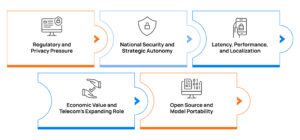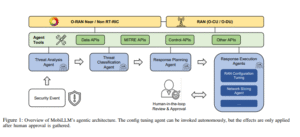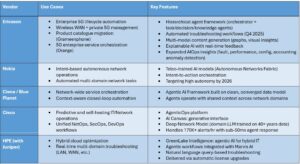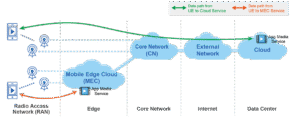Last updated on December 21, 2017
We have seen the revolution in IT infrastructure networking with SDN and NFV in last 5 years. We are witnessing tremendous upgrade in digitization which resulted in agile and highly available network connectivity with the help of both of these technologies. Be it telecom or data center, SDN and NFV played huge role to reduce costs with adding benefit of faster resource allocation with its software defined nature.
After revolutionizing network with functions virtualization and software defined operations, thought process is moved towards providing ‘intent’ to network to perform tasks. Intent comes from business and IT services in form of demands from network to keep up with growing requirements, while reducing operational and maintenance costs and keep security in place. Organizations now demanding a network should automatically understand requirement, respond to it. In this scenario, network admins want to move away from these demands to avoid tedious operational tasks. This gave a birth to a concept called, Intent-based networking. It is the new innovation after SDN & NFV wherein a business need to provide an ‘intent’ or task to network.
Intent-based networking combines capabilities from latest networking innovations like SDN, machine learning, virtualization, model based APIs along with added security innovations to create software mechanism which help in planning, designing, implementing, operating and monitoring the network. Intent-based networking improves network automation and abstract network complexity by reducing the need to manual network programming or configuration. A simple use case might be a network administrator send a network upscale request to network in natural language and network responds to that. Same way, network administrator send a request to monitor a specific network connections and network responds with statistics on that specified connection. In simple language, IBN allows network admins to define what they want to do with network, making a network management platform to create desired state of network and push policies.
Characteristics
As per Gartner, Intent-based networking can have below four characteristics
- Translation and Validation– The system takes a higher-level business policy (what) as input from end users and converts it to the necessary network configuration (how). The system then generates and validates the resulting design and configuration for correctness.
- Automated Implementation – The system can configure the appropriate network changes (how) across existing network infrastructure. This is typically done via network automation and/or network orchestration.
- Awareness of Network State – The system ingests real-time network status for systems under its administrative control, and is protocol- and transport-agnostic.
- Assurance and Dynamic Optimization/Remediation– The system continuously validates (in real time) that the original business intent of the system is being met, and can take corrective actions (such as blocking traffic, modifying network capacity or notifying) when desired intent is not met.
With its all the characteristics we can expect Intent-based networking can help network admins in detecting and automatically resolving network issues, predict the network problems like slowdowns or security breaches.
Companies
Intent-based networking is still in early days where some vendors are offering some part of functionality or every feature of Intent-based networking in their solutions. Currently vendors like Apstra, Forward Networks, Veriflow, Gluware and Velocloud are offering IBN solutions. Recently, Cisco announced their arrival in IBN market and proposed the extended solution and upcoming features from Intent-based networking. Juniper also announced the ‘Juniper Bots’ solution which provider network automation by interacting with network. Juniper solution consist of 3 bots to facilitate automation: Contrail PeerBot, Contrail Testbot & AppFormix HealthBot.
Conclusion
I think this is all about the thought process of businesses to be agile, automated and secure but keeping costs in control. Intent-based networking is nothing but providing machine learning capabilities to network infrastructure and make operations completely automatic. Artificial intelligence will disrupt many industries in future. Intent-based networking seems to be form of how AI come into networking picture to make network smarter.
References
- https://blogs.cisco.com/enterprise/journey-to-an-intent-based-network
- http://searchsdn.techtarget.com/answer/What-is-the-relationship-between-SDN-and-intent-based-networking
- https://blogs.gartner.com/andrew-lerner/2017/02/07/intent-based-networking/
- https://www.networkworld.com/article/3243926/lan-wan/juniper-brings-ai-bots-to-intent-based-networks.html






Be First to Comment